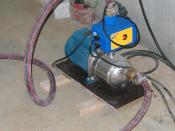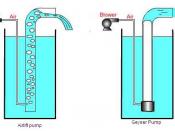The following speaks to the importance of the computer graphics being viewed as an operator runs a chemical process from an automated control room. Much thought must be put into the creation of these graphics beyond just making them aesthetically pleasing. The graphics are typically displayed on a computer monitor and the operator manipulates the process via conventional keyboard and mouse.
Color Choice
Although the color choice may not seem like an important role in the design of a graphical layout, it can prove quite fruitful if used wisely. Choosing a color palate is one of the first things that should be done before one starts creating graphics. It is important to plan early so that all graphics for a particular project are consistent, and the amount of time spent revising is minimized. Specific colors should be chosen to represent vessels, pipelines, pumps, fans, and any other process equipment to be displayed.
The background is most often black to minimize strain on the operators' eyes. It is also important to choose contrasting colors so that the operator can easily distinguish between different objects onscreen. Colorblindness may need to be considered as well.
Typically, vessels such as storage tanks, mixers, reactors, distillation columns, heat exchangers, and furnaces are given a cool gray color. These vessels are relatively large as compared to pumps and motors and therefore consume a larger amount of space on the screen. They are given a darker color so as not to be distracting.
Objects such as pumps and motors are of a more critical interest to the operator. Therefore, they are assigned brighter colors. Following a "traffic light" convention, green is used for a running motor and red is used for a motor that is off. Caution must be taken though; if there is a heating element...


